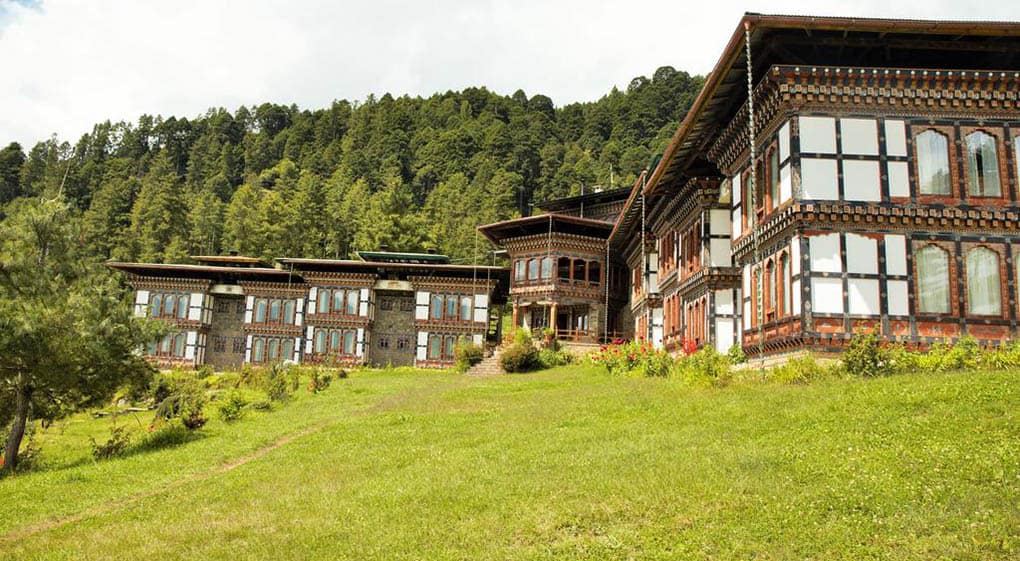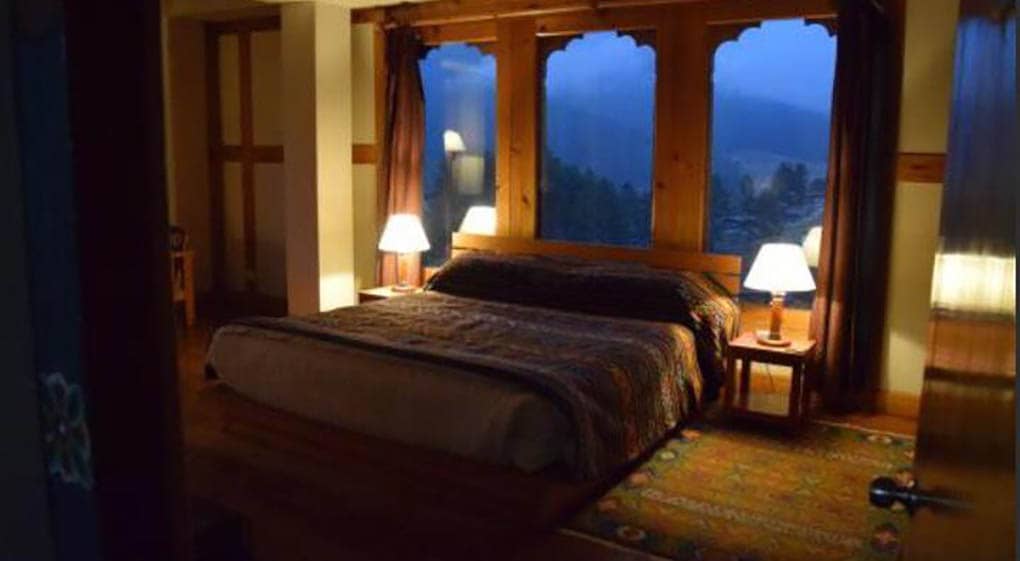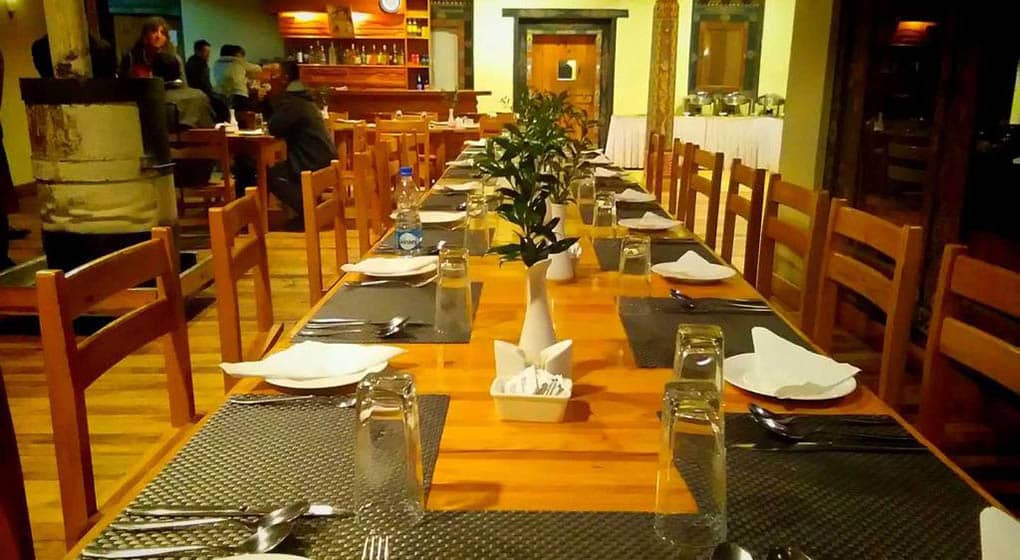
Private Tour Experience
Odyssey Bhutan: Land of the Dragon
8 Days From
$2327
per person
Friends, Family, or Small Groups
Call 888 472 9264
and speak to a travel professional
Included with your Private Tour Experience
- 7 nights accommodation in deluxe hotel on twin sharing basis
- Daily breakfast and dinner at the hotel, lunch at local restaurant as indicated in the itinerary [Breakfast/Lunch/Dinner]
- All transfers and sightseeing as per itinerary
- All entrance fees as per itinerary
- All tours conducted with private vehicle & experienced local English-speaking guide
- Highlight of the trip is Phobjikha Valley, at altitude of 9,536 ft.
- Optional: hike the Khotakha Trail (4 hrs)
- Majestic hike to Taktsang Monastery (Tiger’s Nest)
- Governmental royalty fees and taxes
-
ITINERARY
- DATE&PRICING
- ACCOMODATION
Bangkok – Paro flight included.
Up on arrival in Paro airport, meet your guide and driver outside the terminal. After brief introduction, you will drive to a neat tourist standard restaurant for welcome tea and then discuss briefly about the programs for the trip.
Next to the National Museum and Kyichu Lhakhang Temple, which is one of the 108 temples that King Songsten Gampo of Tibet miraculously built in a single night in the 7th century.
Later visit the Karma Lekshey Jugney Nursery and meet the students. Activities here include, Teaching basic nursery rhymes and student’s interactions. Enjoy a warm cup of tea with the students and Ani (nun) Kencho and other volunteer teachers. Most of the students here are 4-12yrs old and come from poor family background and some without parents. This is private schools therefore receive very less support from the governments as a result during your visit a small contribution will build a brighter future of this underprivileged students.
Note: When you visit a family or any schools, it is customary to give some gifts such as school supplies, groceries for the hostel, or anything handy that is useful for the students’ education.
Evening drive to the capital city, Thimphu (approx. 44 mi, altitude 7,136 ft, 1 hr drive). En-route, stop to walk the ancient Iron Bridge at Tamchog Lakhang maintained by his descendants. Check in upon arrival to the hotel.
Late evening, you will visit the impressive Trasichoe Dzong. This fortress of the glorious religion is the administrative and religious center of Bhutan. The fortress houses the Royal Throne, National Assembly, and the seat of the Chief Abbot of the central monastic body.
Overnight at the hotel in Thimpu
After morning breakfast, visit the Weekend Market (open Wednesday, Saturday, and Sunday), which is one of the largest domestic markets in the country. Next to the market is the Changlimithang Archery Stadium. On government holidays or weekends, you will normally find people playing archery at leisure among friends, or even tournaments.
Next, visit Takin Preservation Centre (closed on Mondays) at Motithang, followed by Zilukha Nunnery, a residence of 40 – 65 nuns. The main shrine at the Nunnery is dedicated to the famous saint, Drubthob Thang Thong Gyalpo, popularly known as the Leonardo da Vinci of the Great Himalayas.
The Painting School a.k.a Zorig Choesum, operates four- to six-year courses that provide instruction in Bhutan’s 13 traditional arts. Students specialize in painting furniture, thangkas – painted religious pictures (usually on canvas), woodcarving (masks, statues, and bowls), embroidery (hangings, boots, clothes) or statue making (clay). The craft demonstrations are a photographers’ dream and it’s hard not to be impressed with the skill and discipline of the young students. The showroom sells good-value pieces made by students. Then, visit Jungshi Handmade Paper Factory. You may or may not visit all attractions depending on your interest and available time in the day.
Afternoon, visit the King’s Memorial Chorten that was dedicated to the third king of Bhutan. This is an impressive shrine, with shining gold spires, tinkling bells, and an endless procession of devotees around it. Finally, drive to Buddha Dodenma at Kuensel Phodrang. Overlooking Thimphu valley sits a 61m tall statue, one of the largest statues of its kind in the world.
Overnight at the hotel in Thimpu
Following breakfast, begin a scenic drive to Punakha, the former capital of Bhutan (altitude 1850 m/5,925 ft, 76 km/51 mi, 3 hr drive).
As you leave Thimphu behind, the road gradually winds up through villages and pine forests to Dochula Pass (3,100 m/10,168 ft), marked by 108 Buddhist Chortens (Stupa), surrounded by the East-West Highway. On a clear day, the pass offers a superb panorama of the snow-capped mountains and the valleys. The descent after the pass is very interesting as you can see the road drop slowly through the changing vegetation to the sub-tropical lowlands of the Punakha and Wangdue Valleys.
After lunch, visit the stunning Punakha Dzong, one of the most impressive of all the Dzong (fortress) architectures of Bhutan. Today it serves as the winter residence of the Central monk bodies, led by the chief abbot who moves there from the capital.
Next, proceed for a pleasant hike to the Khamsum Yulley Namgyal Chorten – about 45 min. up, but only 30 min. down. The Chorten (stupa) shaped temple is situated atop a beautiful hillock overlooking the valley, dipping into beautiful rice paddy fields. Built by the Queen Mother, it is an example of Bhutan’s finest traditional architecture.
Optional: Take an evening walk to Metsina farmers market at Lobesa.
Overnight at the hotel in Punakha
Early morning, visit the Chimi Lhakhang, the temple of fertility. Later drive to the isolated Phobjikha Valley, a.k.a Gangtey (altitude 2980 m/9536 ft, 64 km/43 mi, 2 hr drive).
From the lowlands of Punakha, the road gradually climbs up through dense oak, magnolia and rhododendron forests, up to the most revered Black Mountain Range, which once stood as a barrier separating the Eastern and Western regions of Bhutan in ancient times. You may take a short time-out with some tea and snacks at Nubding, while appreciating the panoramic views of the snow-capped mountains including Mount Jumolhari (7326 m / 23443 ft), on a clear sky.
From here, continue 45 min. drive to Phobjikha Valley. The valley and its wet-lands provide natural habitat for endangered species such as the Black-Necked Cranes, which fly all the way from the Tibetan Plateau during winter in search of their roosting grounds. It’s only been a few years since the first electricity arrived here, the reason being that it could reduce the number of cranes arriving into the valley.
Visit the Sarus Crane Information Center, which has informative displays about the cranes and the local environment in Phobjikha Valley, known as a sacred valley. One of the reasons for this designation is that before arriving and leaving each year, the Black-Necked Cranes circle the local monastery three times.
After, visit Gangtey Goemba (monastery) and enjoy the valley’s prime real estate, on a forested hill overlooking the green expanse of the entire Phobjikha Valley. The extensive complex consists of the central goemba, monks’ quarters, a small guesthouse, and outlying meditation centers.
Overnight at the hotel in Gangtey
Phobjikha Valley is an excellent place for day hikes.
Start the trek from Tabiting at 2,830 m towards Gogona. It’s a moderate trek, passing through meadows and fields, then ascending the Tselela Pass at 3,440 m through mixed forests of juniper, bamboos, rhododendrons and magnolias. The trails cross several meadows and a beautiful hilltop just before reaching Sha Gogona.
Gogona is a small village with an outstanding monastery under the care of Gangtey Gompa. During winter, the valley is also home to the Yak herder’s who come down to the valley in order to barter milk, butter, and other livestock products with rice, cereals, wheat, etc. while their Yaks graze the dwarf bamboo shoots, which grow in plenty and are considered the Yak’s favourite food. You will also find families of Bjop (nomads) living in the valley. There used to be only three families of Bjop residing in the entire valley around 15 yrs ago. Because of their isolation, the Bjop continue using their own dialect (Bjop kha) and live a life of their own. Evening, return to the hotel in Phobjikha. Walking Duration: approx. 5 – 6 hrs
Depending on time and interest, you may visit a family (arranged by the guide), where you will meet with the family members and exchange conversation over a hot cup of Suja (salty butter tea).
Note: As a part of the tradition, make sure you have a small gift packed for the family, such as books and pencils for the children, warm hats, etc. The point is to not be empty handed when you meet them.
Optional: Take a day walk in the valley, known as the Khotokha Trail. It takes approximately 4 hrs for casual trekkers to reach Khotokha from Phobjikha. Walk through the forest and have the chance to see some birds. In Khotokha, you can visit the monastery, which has around 100 monks. Visit some farmhouses in the village. After a packed lunch, you will return to Phobjikha for the night (about 7 – 8 hrs in total for the round trip).
Overnight at the hotel in Gangtey
In the morning, retrace your drive back to Paro across Dochula Pass, providing one more opportunity to view the peaks of the eastern Himalayas (5 hr drive).
Visit the National Museum, housed at Ta Dzong – the former Watch Tower. The museum has a wide variety of collections; from fine arts, handcrafts, arms & armors, bamboo crafts, stuffed animals, stamp collections, bronze statues, and a fine chapel.
From here, visit Paro Rinpung Dzong, which means “the fortress on a heap of Jewels”. It was built during the reign of Shabdrung in 1646. The Dzong, which houses the Paro Monastic School and office of the civil administration, is rich in architecture. The famous Paro Tsechu is held here in the courtyard of this Dzong every year in spring.
Overnight in Paro at Hotel Tashi Namgay or similar
Breakfast at 07:00 am, start hike 07:30 am to the famous Takstang Monastery, a.k.a the Tiger’s Nest.
The Monastery is theatrically perched on the edge of a 10,000 ft. high cliff above the valley floor, creating an impressive sight. Tiger’s Nest undoubtedly is the unofficial symbol of Bhutan, and a must-visit place during your trip to Bhutan. The total trip up and down will take about 4 hrs. It’s also possible to take a pony ride about half the journey up, but for the balance of the trail and return trip down, the pony ride is not advisable.
Optional: Traditional Herbal Bath – with advance notice, you can experience a traditional Hot Stone Bath in a farmhouse. Hot stone bath is a Bhutanese traditional method of curing arthritis, skin ailments, joint pains, hypertension, stomach disorders, arthritis, and many other minor diseases. Even you don’t have any of these ailments, after a laborious day of hiking, you will feel relaxated from the hot stone bath. It costs around US $30 per person, and an advance notice is required.
Overnight at the hotel in Paro
Paro – Bangkok flight included.
Transfer to the airport for your departure flight home.
Travel Period: through April , 2026
| Number of Person(s) | Price Per Person |
|---|---|
| 2 Pax | $ 2,327 |
| 3 Pax | $ 2,228 |
| Single Supplement | $ 435 |
Price per person based on double occupancy – Minimum two (2) persons.
*Airfare – Contact us for pricing
Khang Residency

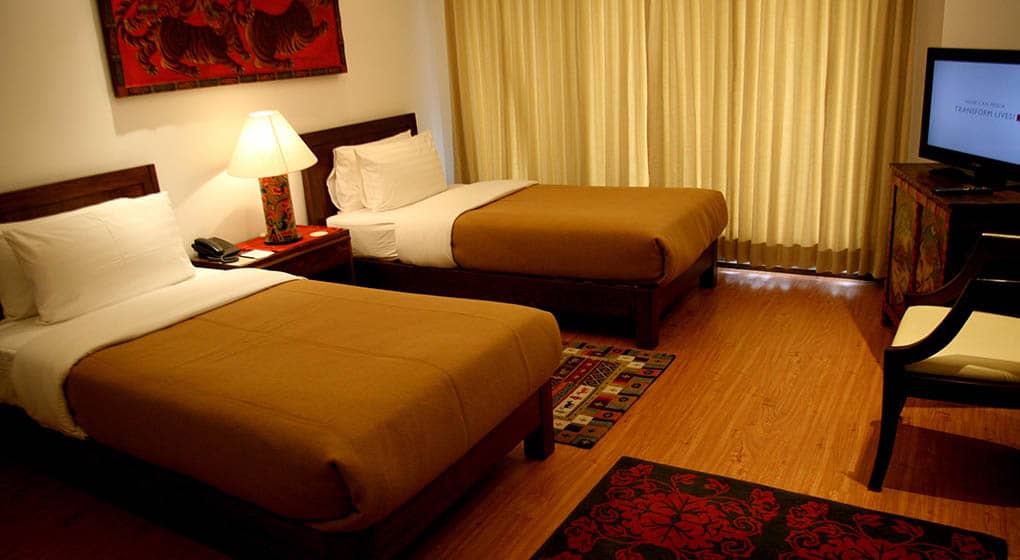
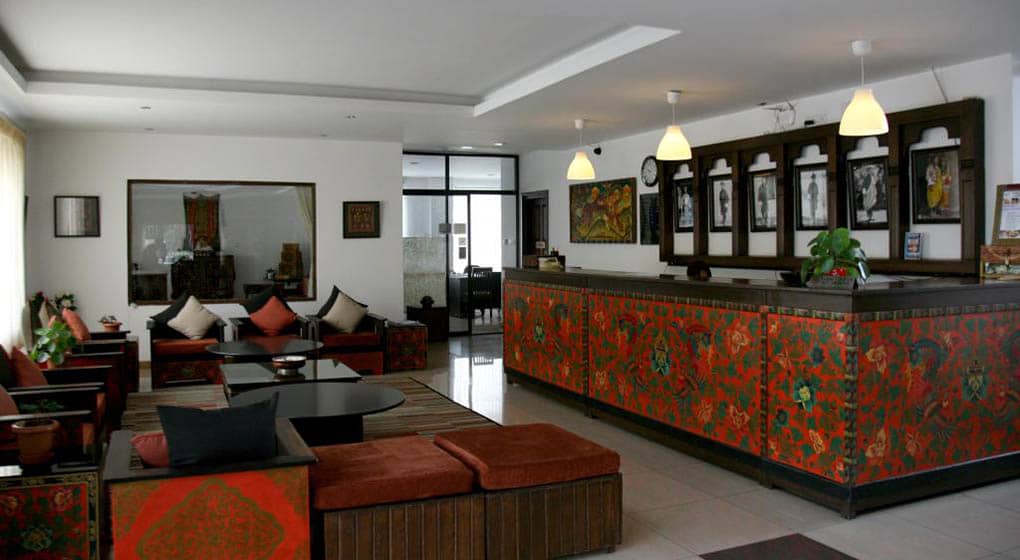



Zhimkham Resort

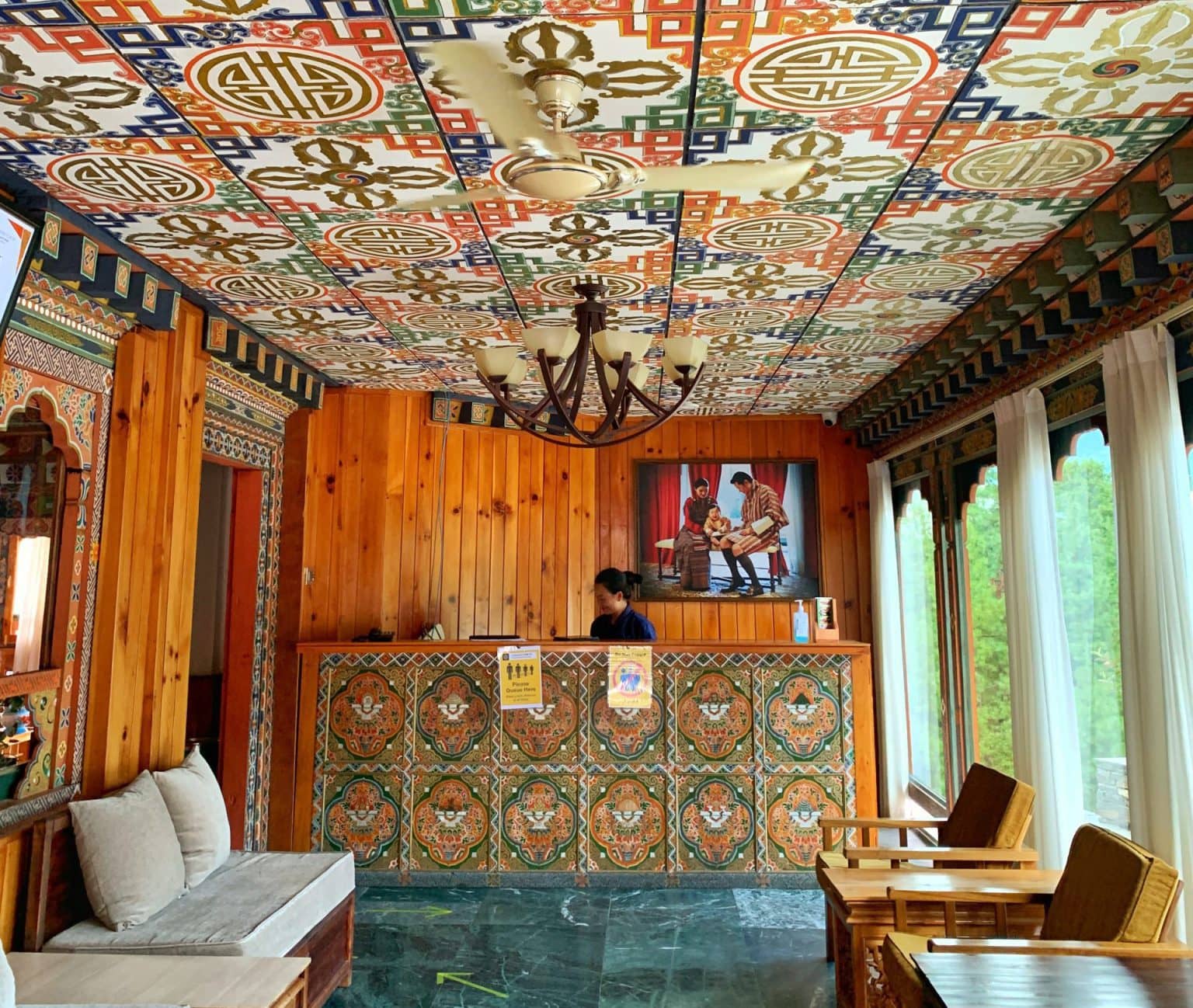
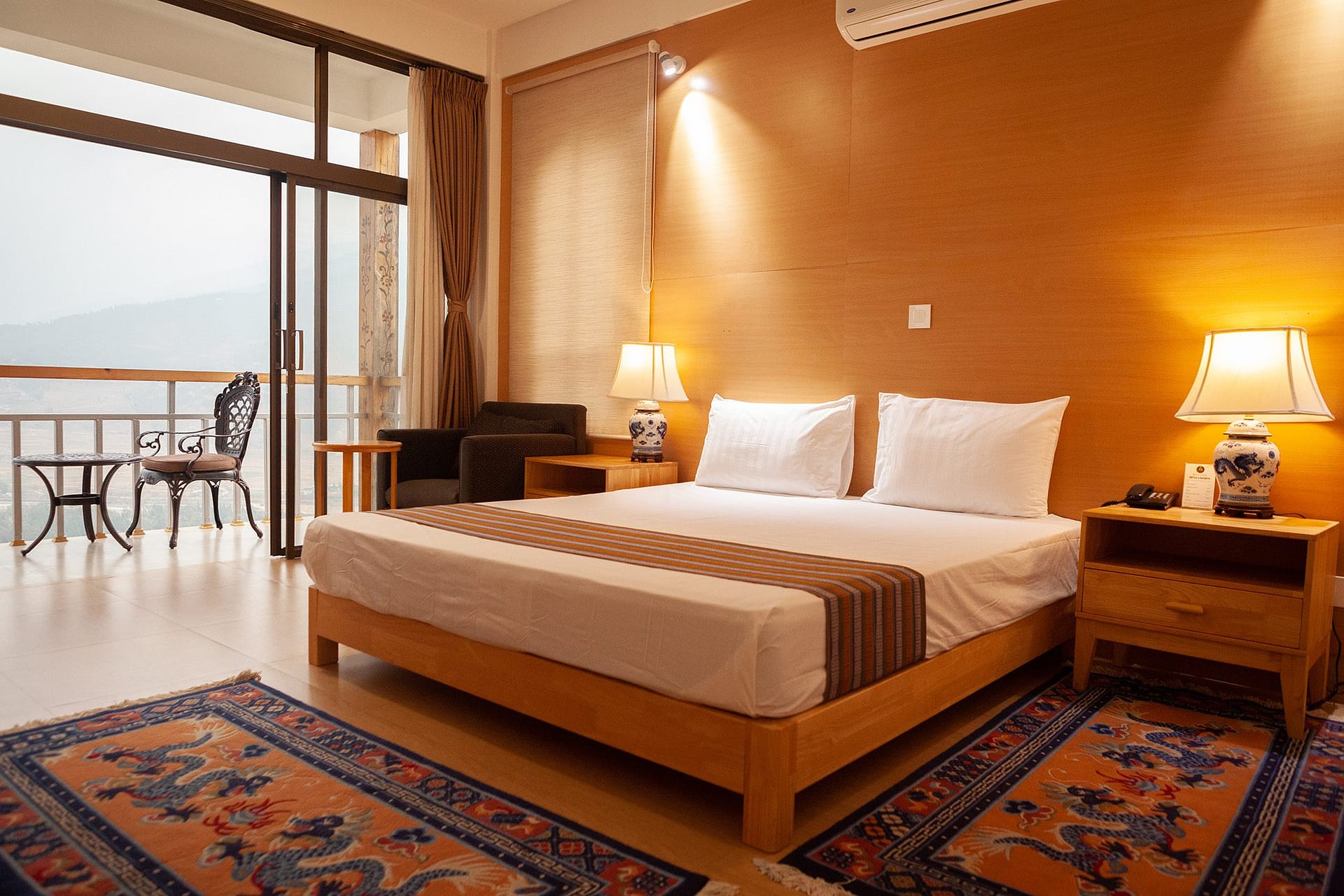



Dewachen
